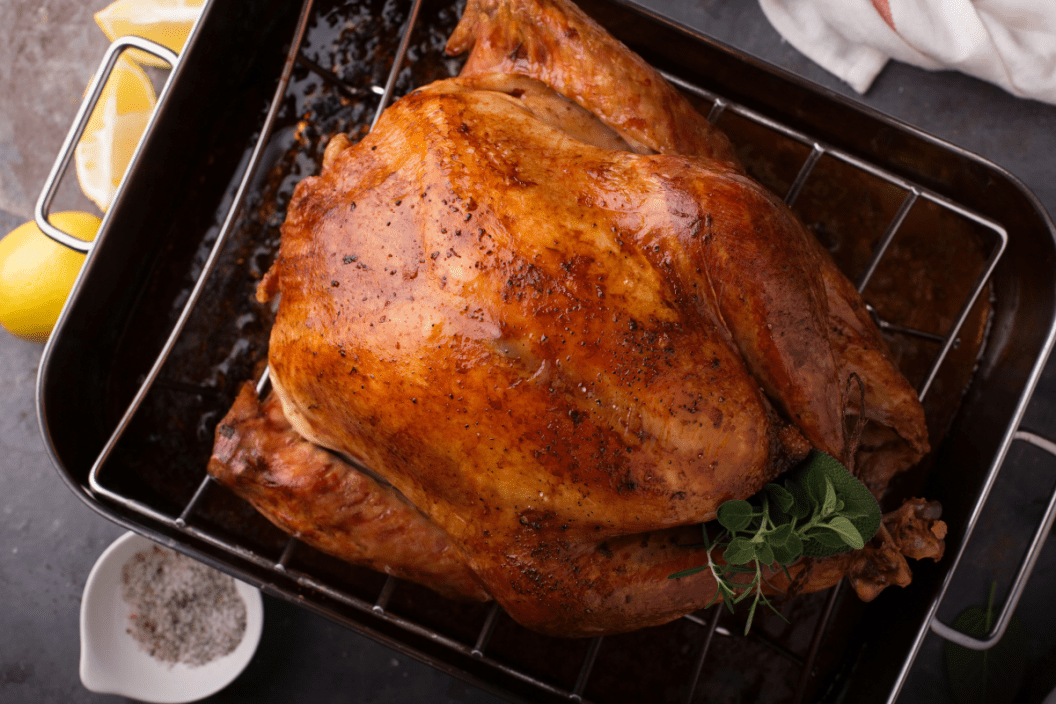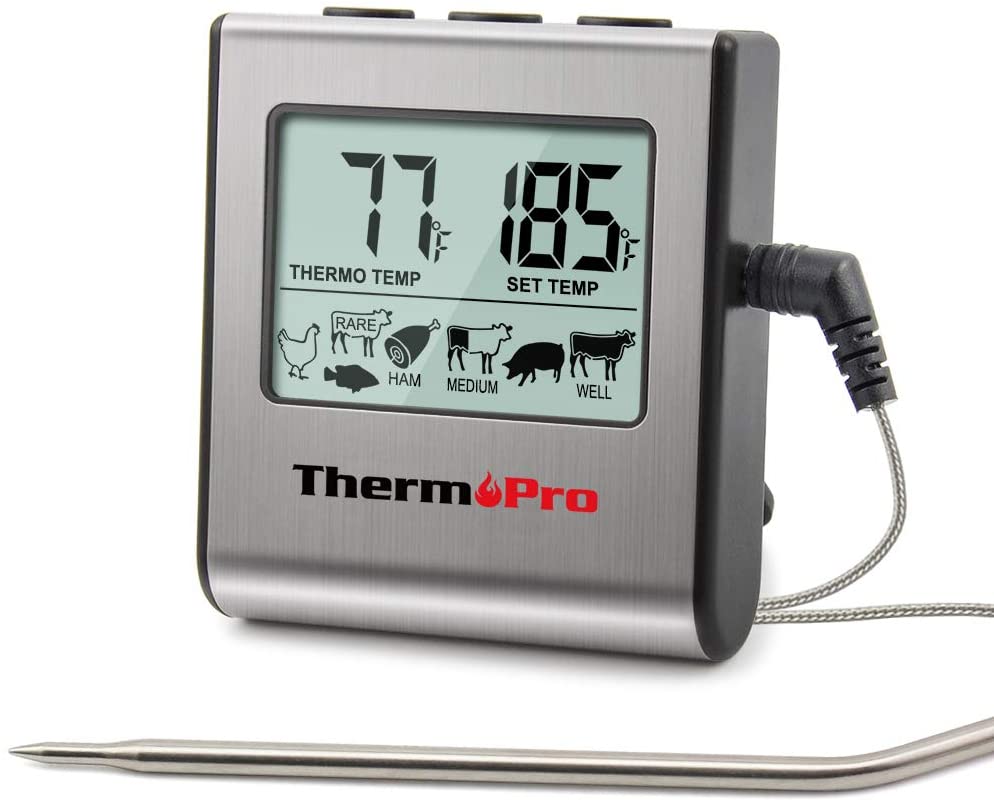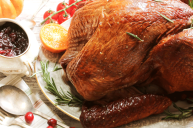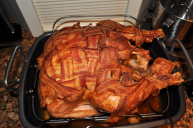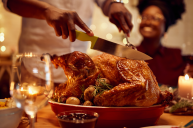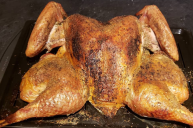I'll never forget the first Thanksgiving I hosted. The whole family gathered, watching football in the living room as we prepared for roasting a turkey in the kitchen. Everything was on track - I was serving roast turkey, and it was cooking in the oven. The stuffing was cooked and ready to be re-heated, and the potatoes were soft and set to mash at a moment's notice. The timer went off on the turkey, and as it rested on the large roasting pan, I busily went to work cooking the vegetables, tossing the salad, and mashing the potatoes.
Videos by Wide Open Country
My husband went to carve the Thanksgiving turkey and to our horror - it was pink. Really pink. Like, very much undercooked. Cursing, I shooed everyone out of the kitchen (including my mother, who was trying to take pictures of the momentous occasion) and tried not to cry as I set everything on hold to finish cooking the turkey.
Therm Pro Meat Thermometer
I learned a seriously valuable lesson that day - no matter how prepared I was, I should have used a meat thermometer. It's all good and well to know the average roasting times per pound of turkey, but the best way to know when your turkey is done is by probing it with a meat thermometer. Now, I'm a pro at hosting Thanksgiving dinner, and I can't wait to share that knowledge with you. So here's everything you need to know about roasting a turkey in the oven and keeping the inside juicy and the skin nice and crispy.
We want to keep this simple and straightforward, so we'll keep the discussions about thawing and brining the bird for a separate post. Don't worry if this is your first time making a roast turkey recipe, we got you covered! Your guests will love this perfect roast turkey and turkey gravy.
Some General Rules of Thumb
- Plan for 13 minutes of cooking time per pound of turkey, or 15 minutes per pound if it's stuffed.
- Dark meat (wings, thighs, and drumsticks) takes longer to cook than white meat (breasts and tenders), so the turkey isn't done until the thickest part of the thigh registers 165 degrees F (the USDA recommended temperature for cooking poultry) as the internal temperature.
- Always rest your turkey before carving - at least 15 minutes, but preferably 45 minutes for the best turkey.
- We recommend not stuffing the turkey with any additional filling. It adds extra cooking time to your bird and increases the chance of salmonella from undercooked stuffing. If you must stuff it, be sure to probe the stuffing, too, when the thigh reaches the appropriate temperature. Everything must be 165 degrees F, so keep this in mind with the cook time.
Roasting a Frozen Turkey
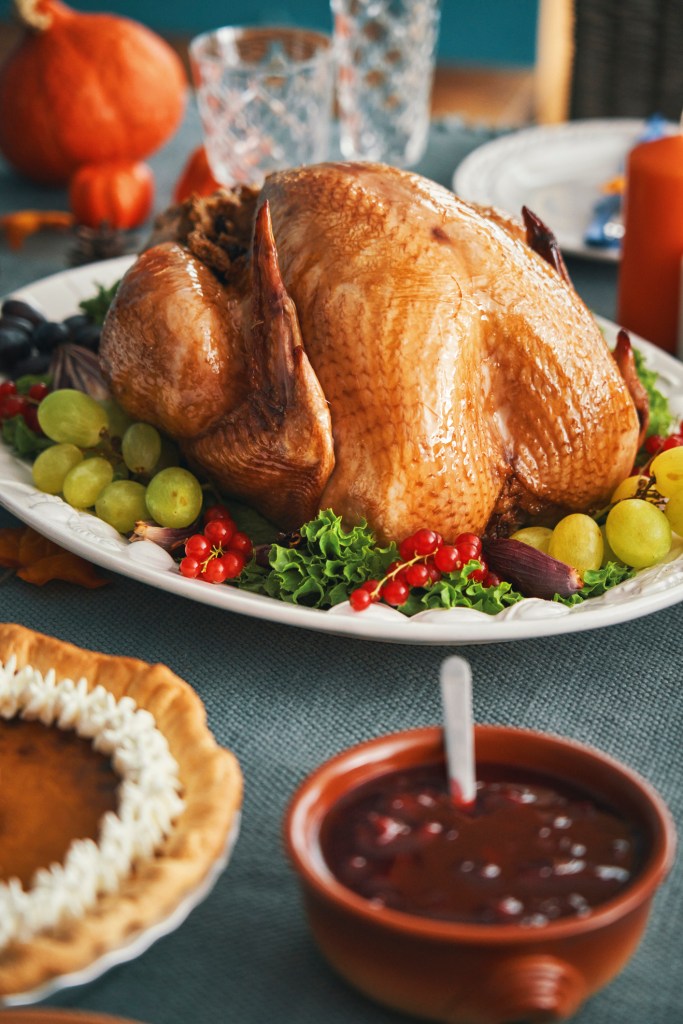
Getty Images
All of the same methods apply to fresh turkeys that apply to chickens, so don't fret too much - just think of cooking a turkey as the same as cooking a very large chicken. Here are our step-by-step instructions for roasting a turkey.
The turkey will cook very unevenly - the wings and drumsticks will cook the fastest, while the thickest part of the breast will take the longest - so make sure you're probing the bird with an instant-read thermometer in multiple places, and at multiple depths. The meat on the surface will cook faster than the meat closer to the bone. When everything is above 165 degrees F, you're finished! Rest the cooked turkey like normal.
Our friends over at the Kitchn created this handy table of cooking times for frozen turkeys:
Estimated Cooking Times for Frozen Turkeys
- 8- to 12-pound turkey: 4 to 4 1/2 hours
- 12- to 14-pound turkey: 4 1/2 to 5 3/4 hours
- 14- to 18-pound turkey: 5 3/4 to 6 1/4 hours
- 18- to 20-pound turkey: 6 1/4 to 6 3/4 hours
- 20- to 24-pound turkey: 6 3/4 to 7 1/2 hours
Partially thawed turkeys will have shorter cooking times
Roasting a Turkey for Thanksgiving
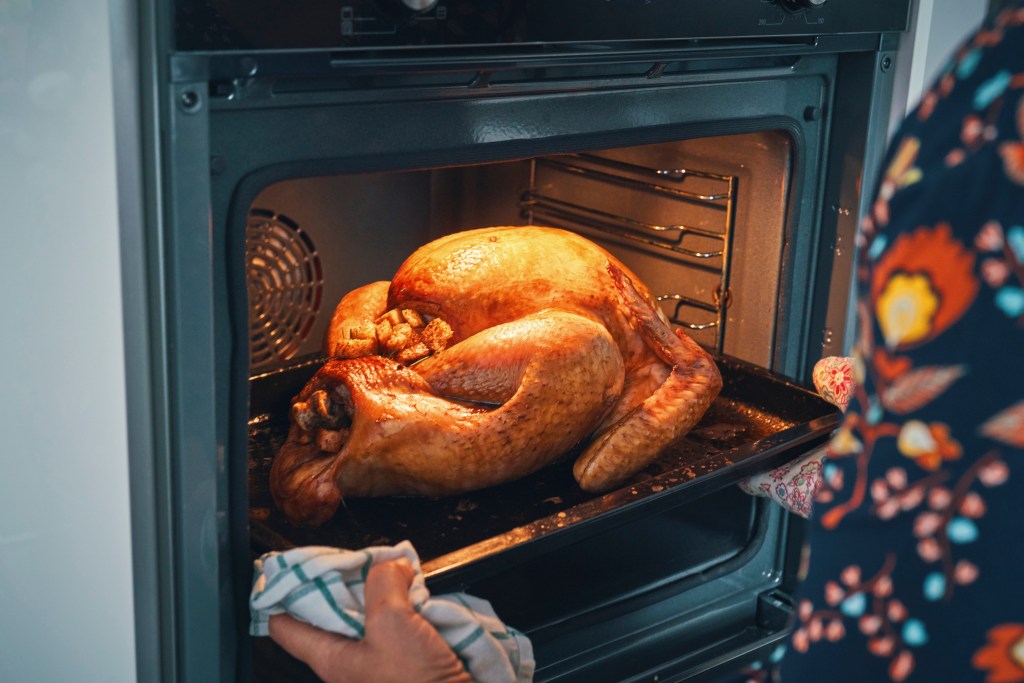
Getty Images
All of the same methods apply to fresh turkeys that apply to chickens, so don't fret too much - just think of cooking a turkey as the same as cooking a very large chicken.
1. Bring it to room temp.
Start by removing the turkey from the refrigerator and setting the turkey breast-side up on a roasting pan about an hour before roasting. Even 30 minutes, while you're preheating the oven, will help if you happen to have forgotten to take it out earlier.
Bringing the turkey up to room temperature will help to cook the meat more evenly from outside to inside. Pat the turkey dry with paper towels, and if you haven't brined it, you can season it with salt and black pepper.
2. Preheat and probe.
Preheat your oven to 450 degrees F. If that oven temperature seems too hot, don't worry. We're just blasting the turkey to get some crisp on the skin. Once hot, add some liquid to the roasting pan (broth, water, wine, cider - your choice!). This will add steam to the oven, keeping your bird as moist as possible.
Place your meat thermometer in the thickest part of the thigh meat. Be careful not to pierce too far into an air pocket and not to touch the bone. If you don't have an oven-safe thermometer, you can probe the turkey later in the cooking to see if it is done. But, I'll be honest - this tool really makes your life much easier.
3. Get to roasting.
Place the turkey in the oven and immediately turn down the heat to 350 degrees F. Cook for about 13 minutes a pound, until the thermometer reaches 165 degrees F. If you don't have an oven-safe thermometer, check the temperature about halfway through the cooking time to see if you're on track.
4. Don't forget to baste.
Every 45 minutes, baste the turkey using a turkey baster, a ladle, or a spoon to drizzle the pan juices on top of the turkey. This helps to slow down the surface cooking, slowing down the rate at which the breast meat cooks.
In the last 45 minutes, you can switch to basting with melted butter or olive oil to crisp up the skin to a golden, brown color. Alternatively, if you feel like the turkey is getting too browned, cover the breast meat with aluminum foil towards the end of cooking.
5. Let it rest.
When the turkey has reached 165 degrees F, remove it from the oven. Tilt the pan so the liquids inside the turkey cavity run out into the pan, reserving all of those juices for making gravy. Then, lift the whole turkey and the rack and place the turkey on a cutting board with deep grooves.
Let it sit for at least 15 minutes, but preferably 45 minutes. This redistributes the juices within the meat instead of spilling them out onto the cutting board.
Make Gravy
While the turkey is resting, whip up your gravy. Some people start their gravy by simmering the turkey neck with onions, carrots, and celery. I like doing this if I have extra time, but you can also make a great gravy just using the pan drippings from the roasted bird. Cook some flour with good quality butter and add it to the drippings to thicken them up. You can also use cornstarch if you like, but I personally don't like that thick cornstarch flavor.
Once the gravy is completed, I like to add lots of freshly ground black pepper. You can also add fresh herbs like sage, thyme, and rosemary. If you like spicy food, add some red chile flakes or your favorite hot sauce. Serve with mashed potatoes.
Carve Away
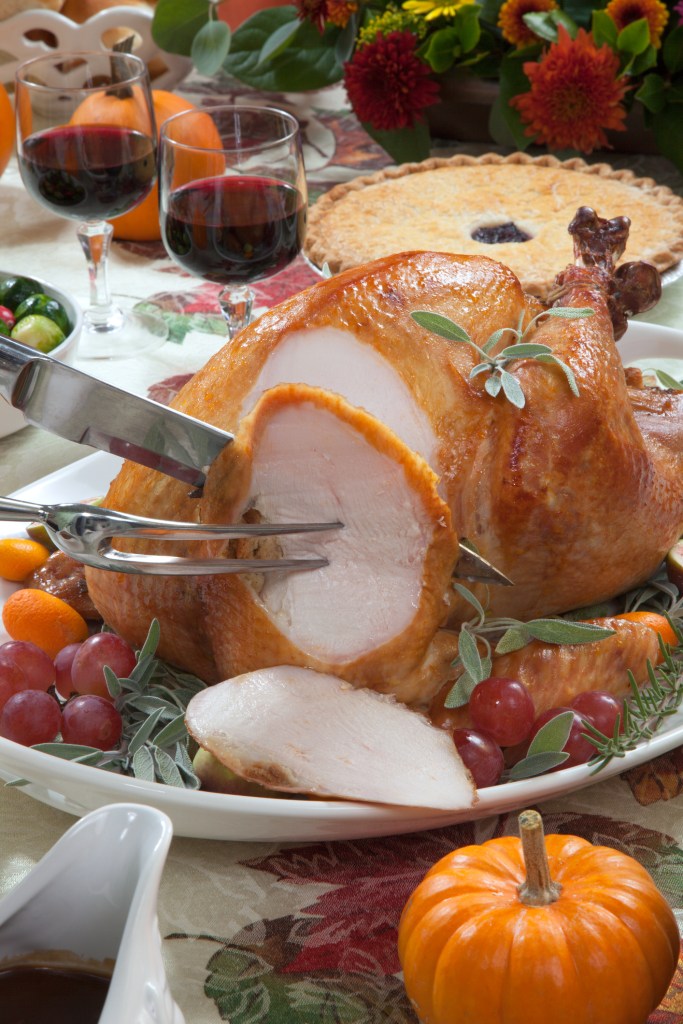
Getty Images
Carving a turkey may seem overwhelming, but you got this! It's just a very, very large chicken. Start with a sharp knife and remove the wings first, followed by the drumsticks and thighs. If the turkey is fully cooked, they'll easily pop out of the joints so all you need to do is cut through that joint. Then, remove the breast meat by slicing along the ribcage with the flat of your knife. Once everything is off the bone, you can slice it into individual slices.
Now that everything is finished, it's time to relax and enjoy! Serve your roasted turkey with that freshly made gravy, your favorite rolls and softened butter, and all of your favorite vegetable sides and stuffings. And don't forget to save the leftovers for my favorite next-day meal: Turkey Tetrazzini.
